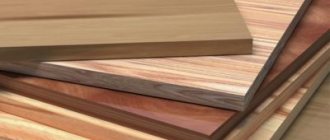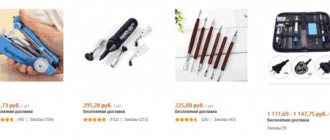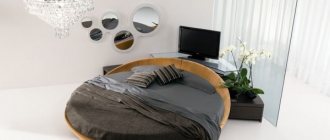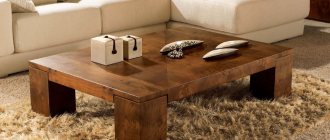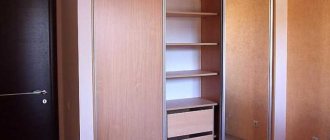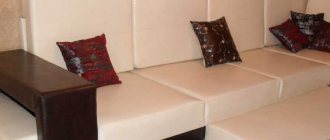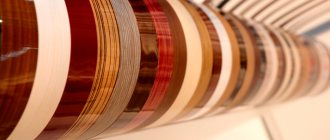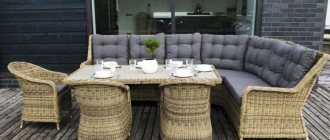0
35284
The product market offers a huge amount of upholstered furniture of different models and configurations in any price category. But often in the interior of a room you want to have an original product in an unusual design. Making upholstered furniture with your own hands is an entertaining process that will not only save money, but also implement individual ideas for the configuration, as well as the appearance of the product. So what is important to know when creating an exclusive piece of upholstered furniture?
Upholstered furniture market analysis
To make a profit from this business, it is necessary to conduct a detailed market analysis, carefully study the level of competition and demand in the region. Study websites, social networks, wholesale and retail prices, products, their quantities and options, suppliers, special offers, competitors, shopping centers where products are sold and where they are located. Provide a detailed definition of your competitors. Based on this data, you will better understand what you need to do for your business. Calculate the profitability of the upholstered furniture business. We gave an example of a financial plan earlier.
Researching the furniture market will help you choose a place for production, sales and calculate profits.
A thorough study of your competitors' work will help you identify their weaknesses and gain a foothold in the upholstered furniture trading market. This information will be useful in further selection of pricing policies. Thus, this will allow you to achieve your goals, such as making a profit.
Business relevance
For small and medium-sized businesses, the niche of upholstered furniture production is the most interesting. Why entrepreneurs choose this particular niche:
- Recently, people have begun to order furniture specifically according to individual requests. Large factories do not engage in private orders, which is beneficial for entrepreneurs starting a business in this area.
- Possibility of producing furniture by hand, without expensive equipment. This significantly reduces start-up costs.
- Entrepreneurs can quickly respond to trends by taking into account the desires of customers. Large factories will need at least several months to change direction.
- Using special materials and accessories, exclusive models are produced that attract people with high incomes.
Upholstered furniture market
Typically, wealthy people update their furniture every few years. But the segment of expensive furniture occupies no more than 13% of the total furniture produced in Russia. Products in the mid-price segment account for approximately 60%. This variation can be explained by the fact that when buying expensive products, they prefer foreign brands rather than Russian ones. Furniture market trends are as follows:
- People like custom furniture orders instead of mass production. Therefore, we get creative units of goods that have no analogues. Many even sacrifice practicality for the sake of unusual design.
- The manufacturer must be prepared for the fact that money will always be required, despite the low price of the equipment. These expenses are necessary for the purchase of materials, accessories and raw materials. A lot of upholstery, filling and fabrics are needed. In another case, the production of furniture from scratch may take longer, which will affect demand.
- Do not sell products only through stores. This way it turns out to sell only 20-30% of the goods.
- Focus on the region in which the organization operates. Organizing the transportation of furniture requires additional serious costs and time. Accordingly, the profit received decreases. A good solution would be to even reduce the cost, sell only in the region and actively promote the brand.
- Buyers of domestic furniture prefer collapsible mechanisms. For the most part this applies to sofas. The “Eurobook” and “dolphin” transformers are popular.
Advantages and disadvantages of upholstered furniture
It is difficult to imagine an apartment that would not have upholstered furniture. There is suitable furniture for different interiors on sale, and if not, they will make it to order.
Advantages:
- An indispensable thing for relaxation is upholstered furniture;
- Spectacular apartment decoration.
- Functionality. For any area you can choose transforming furniture.
- Versatility. Today, upholstered furniture is purchased for various premises (not always residential), but also for office, public, and municipal (cafes, schools, hospitals, banks).
- Zoning. Furniture is often used to separate zones in an apartment (small studio apartment without partitions).
- An assortment of materials to suit any request. You can purchase environmentally friendly products.
Flaws:
- Products with branded upholstery.
- Deformation of soft elements over time.
- Seams coming apart.
Furniture classification
Technical documentation and standards do not use the concept of upholstered furniture, because... it has several special elements: fillers, springs, pillows, and they can be hard.
An entrepreneur can produce one or several types of furniture at once. The more diverse the offer, the more customers you will be able to attract.
Kinds:
- armchairs;
- sofas;
- banquettes;
- ottomans;
- chairs;
- couches.
Types of upholstered furniture.
Furniture designs are divided into several subtypes based on the presence of a frame and general structure.
- Frameless. Fashionable furniture that does not have a frame. There is usually filler inside. A beanbag chair falls into this category.
- Modular. Furniture consisting of several modules that can be installed in different orders or even in different rooms.
- Sofas. Almost every apartment has them. There are two - three-seater or more. Corner and straight, with additional elements, countertops, drawers, lighting, etc.
- Armchairs. Recently, multifunctional models have been in demand. A compact chair that can turn into a sleeping place.
- Ottoman. A sofa without a back or with pillows instead. A model with armrests is rare. In stores you can see ottomans with a wavy back. Euro class models are equipped with folding mechanisms and an additional sleeping place appears.
- Sofa. The sofas feature wide seats. When unfolded, it resembles an ottoman or a bed.
Materials for frame, filling and upholstery:
Materials used for upholstery
For the frame:
- Solid wood. Environmentally friendly, long-lasting base. Periodically it is necessary to treat the wood with antiseptics so that it does not rot or dry out.
- Chipboard. Economy class furniture is made from this material and is not designed for heavy loads. Usually these are structures made from E-1 or E-0 class laminated chipboard; they contain almost no formaldehyde.
- Metal. Metal products are the strongest and most durable. Metal is not afraid of humidity, high temperatures and serious loads.
Master class on creating a frameless model
This design is lightweight, portable, does not scratch the floor covering, and can be easily repaired if defects occur. For work you will need foam rubber and durable furniture fabric. The manufacturing process begins with drawing up a drawing. First you need to prepare the required materials and tools, namely:
- sewing machine, threads, needles;
- scissors, glue;
- measuring instruments, chalk;
- highly elastic polyurethane foam brand HR 3535, capable of withstanding mattress loads of up to 120 kg;
- flock, zippers.
Let's look at the master class step by step using the example of a folding sofa consisting of 4 pillows:
- From a standard sheet of HR 3535 foam rubber, the dimensions of which are 160x200x4 cm (length, width, height), we cut out the required size, for example, in this case, 160x90x4 is the base, 160x60x4 is the second layer (seat), 160x30x4 is the second layer (stand under the back), 160x50x4 – back. To form pillows for each of these components, you will need 6 sheets to get a sofa height of 50 cm.
- We form pillows from foam rubber, glue the sheets together, and cover them with lining fabric. This will allow them to maintain their shape and will also make them easier to install in the case.
- We sew a cover from flock. To do this, we make markings on the fabric corresponding to the dimensions of the pillows with an allowance of 1 cm, cut it into rectangles and strips, and sew them together. At the junction of the stripes and one of the rectangles we install a zipper.
- At the final stage, all that remains is to assemble all the parts of the sofa together. How the parts will be connected needs to be thought through at the planning stage. There are two main ways to attach elements. They can be sewn inside out, stitching a double strip over the joint.
Upholstered furniture production technology
Before starting a business, you need to study and establish production technology in detail. Product quality and compliance with standards and requirements depend on this. Different furniture has different production technologies. The manufacture of sofas is considered particularly difficult to produce. Let's take a closer look at the production of sofas.
Production process:
- Production of wooden blanks. Plywood and boards are sawn to the required size.
- Assembling the frame and attaching mechanisms for transformation.
- Gluing the frames with foam rubber and framing them with upholstery material using a construction stapler. To prevent creaking and knocking of products, darnit is glued to the wood.
- Insertion and uniform distribution of spring blocks.
- To prevent the spring mechanisms from coming into contact with the frame, the surface is covered with foam rubber around the perimeter.
- To make the furniture last longer, the springs are covered with high-density woven material.
- Padding material is placed on top. For cheap models this is spangon or foam rubber. For premium models - coconut coir, which significantly increases the service life to 7-8 years.
Main components for the production of upholstered furniture (sofa)
After completing the stages, the product is checked, only after checking is it packaged and stored in this form until sale. If the company is small and works to order, then the product is sent to the buyer.
Corner sofa
Corner design
To make a corner sofa, it is not necessary to use complex joints, for example, tenon products, or expensive materials. For work, we suggest using the following material, the volume and quantity of which depends on the size:
- timber 30×50 mm;
- chipboard;
- Fiberboard;
- plywood, thickness 5 and 15 mm;
- self-tapping screws and wood screws;
- nails;
- synthetic winterizer, with a density of 140–170 g/day;
- batting;
- foam rubber, thickness 20 and 40 mm with a density of at least 30 kg/m3;
- glue for foam rubber and wood glue;
- foam crumbs;
- furniture fabric;
- lifting mechanism;
- furniture legs 5 cm high.
As for the tool, for work you will need:
- wood hacksaw;
- miter box;
- screwdriver;
- stapler;
- sewing machine;
- knife.
Configurations and sizes of corner sofa blocks
Each structural block is made of a frame, which is based on timber, chipboard and plywood. The internal space in blocks 1 and 2 can be used rationally by making removable covers. To support them, a 20x30 mm beam is fixed around the perimeter of the frame. It is installed below the top cut to the thickness of the cover plate. To make it easier to lift the lid, you can drill holes in it for your fingers.
Frame design block 1
Blocks 1 and 2 are identical in design. The only difference is their size. The first block is 100x60 cm in size, and the second is 60x60. It is the second block that will be located in the corner of the structure and connect the first and third blocks. As for the third block, you can make a drawer-seat in it. Due to this, the usable area of the sofa will increase. To do this, you can install a retractable or rotating mechanism.
The drawer will also be equipped with a chipboard lid. While assembling it is not difficult, difficulties may arise when making the legs. Why? When sliding the drawer into the body of the sofa, they will interfere. Therefore, instead of legs, it is necessary to increase the height of the front side of the drawer. When unfolding the corner sofa, it will serve as a support platform. To make the drawer easy to pull out, you can attach furniture wheels to the bottom.
Block 3
The cover for the third block (indicated in the diagram) can also be made removable. For example, you can fold bed linen inside.
The size of the seat cushion should be equal to the size of the drawer. Therefore, when the drawer is pulled out, the pillow is removed from the back and placed on it instead of the mattress.
Design of the backrest of a corner sofa
Now it's time to make the backrest for the corner sofa. The manufacturing process looks like this:
- Place 3 beams horizontally and, as in the illustration, connect them with vertical posts. The height of the back in our case will be 105 cm.
- The lower second beam will be located at a height of 25 cm. They will serve to fix the backrest to the sofa.
- The top beam will be used as the basis for fastening the sheathing and provide the necessary rigidity of the structure.
- The frame is sheathed on both sides with plywood 5 mm thick.
- To avoid snags and unevenness when laying upholstery fabric, sand all corners with sandpaper.
- Glue thin foam rubber onto the side and front surfaces, due to this the upholstery will be soft.
Finally, all that remains is to cover the entire sofa, including the backs, with the selected material.
Fastening the upholstery
Before doing this, take all the measurements, and then cut out the fabric with an allowance for the hem. You can fasten the material with a stapler. The mounting location should be on the invisible part of the panel end. Make sure that the fabric does not wrinkle at the corners. As for the manufacture of pillows for the back and seat, they can be made from foam rubber with a density of 140–170 g/day and a thickness of at least 10 cm. You will also need to sew a cover with a zipper. This will allow you to remove the cover and wash it if necessary.
Business registration, registration and certification
An entrepreneur who wants to start a business in this area must undergo state registration. For small production volumes, you can open an individual entrepreneur; in other cases, it makes sense to choose an LLC. We previously wrote about enterprise registration forms and OKVED codes in the article “How to open a furniture store.”
Furniture production is not licensed, but in order to receive a quality certificate, products must comply with GOSTs. Private clients, and especially legal clients, want to buy furniture with confirmation of quality.
The main documents that regulate production processes - GOSTs:
Certification
Purchase of equipment
Before starting production, it is necessary to purchase equipment. The final list of equipment depends on the destination. To produce upholstered furniture, you need the following tools:
- wood processing machine;
- multi-rip edger;
- lathe;
- trim;
- grinding machine;
- circular saw;
- milling machine;
- drying chamber;
- power tools (several drills, a hammer drill, a reliable screwdriver, a jigsaw);
- cutting tables;
- Sewing machines;
- a circular saw;
- pneumatic tools – furniture stapler, gun;
- hand cutting tool;
- materials for marking and measuring.
The equipment will cost approximately 200,000 - 250,000 rubles. You will need equipment (not necessarily new), warehouse and office furniture, which will cost about 120,000 rubles. Additional, but mandatory expenses are described in detail in the article “How to open a furniture store in 2021.” Every month you will need to pay: taxes, utilities, advertising, employee wages, mobile communications and the Internet.
Required Tools
The technology for manufacturing upholstered furniture requires the presence of certain tools:
- drill - this basic tool needed to create holes;
- a screwdriver is necessary for installing furniture fittings, screwing in and unscrewing screws;
- jigsaw – you can’t do without it when cutting and creating various cutouts;
- a grinding machine is needed to clean the surface and level the cut line;
- a tape measure is necessary to take measurements;
- a metal meter ruler is needed to mark the surface;
- caliper - a universal tool for determining thickness and depth;
- a steel square will help align the corners;
- the level will clarify the accuracy of the position of the planes in the vertical and horizontal position;
- a simple pencil - marking lines are drawn with it.
How to make your own furniture polish using improvised materials
Almost all of these tools are in the arsenal of a home craftsman. Furniture production at home does not need more, this will be enough.
Room
To place the production you will need approximately 450 sq. m. Here you can fit an upholstery, carpentry, and sewing workshop. Study the technical characteristics of the space you are going to rent. The sanitary and epidemiological station requires the presence of a natural room, as well as supply and exhaust ventilation equipment. A three-phase power supply system will be required to power the tools.
Materials must be stored in a heated warehouse. Cold and hot water supply is needed for showers. The rent of the premises can be calculated using the average cost - 180 rubles. per sq. m.
Requirements for the warehouse and production workshop must meet the following parameters:
- compliance with fire safety standards;
- availability of space for equipment and products;
- ability to maintain temperature 10-150C;
- possibility of adjusting humidity;
- equipping working conditions.
Workshops:
- Joinery – 80 sq. m.
- Upholstery – 70 sq. m.
- Sewing - 35 sq. m.
- Prefabricated and packaging – 50 sq. m.
Retail and warehouse premises:
- Warehouse for materials and components – 60 sq. m.
- Warehouse for finished products – 100 sq. m.
- Office – 30 sq. m.
- Trade and exhibition hall – 70 sq. m.
Approximate layout of the production area.
Production floor plan. Source: Portal of the Perm Construction College
Staff
To operate the production of upholstered furniture you will need staff. If you hire additional employees, your total pay will increase. When looking for workers, pay attention to their experience.
| Staff | Qty | Salary per 1 employee (RUB) |
| Director | 1 | 30000 |
| Chief Accountant | 1 | 20000 |
| Designer-measurer | 1 | 15000 |
| Sales Manager | 1 | 15000 |
| Seamstress | 1 | 10000 |
| Helper worker | 2 | 16000 |
| Workshop workers | 2 | 30000 |
| Master | 1 | 20000 |
| Worker in an upholstery shop | 1 | 15000 |
| Total | 187000 |

